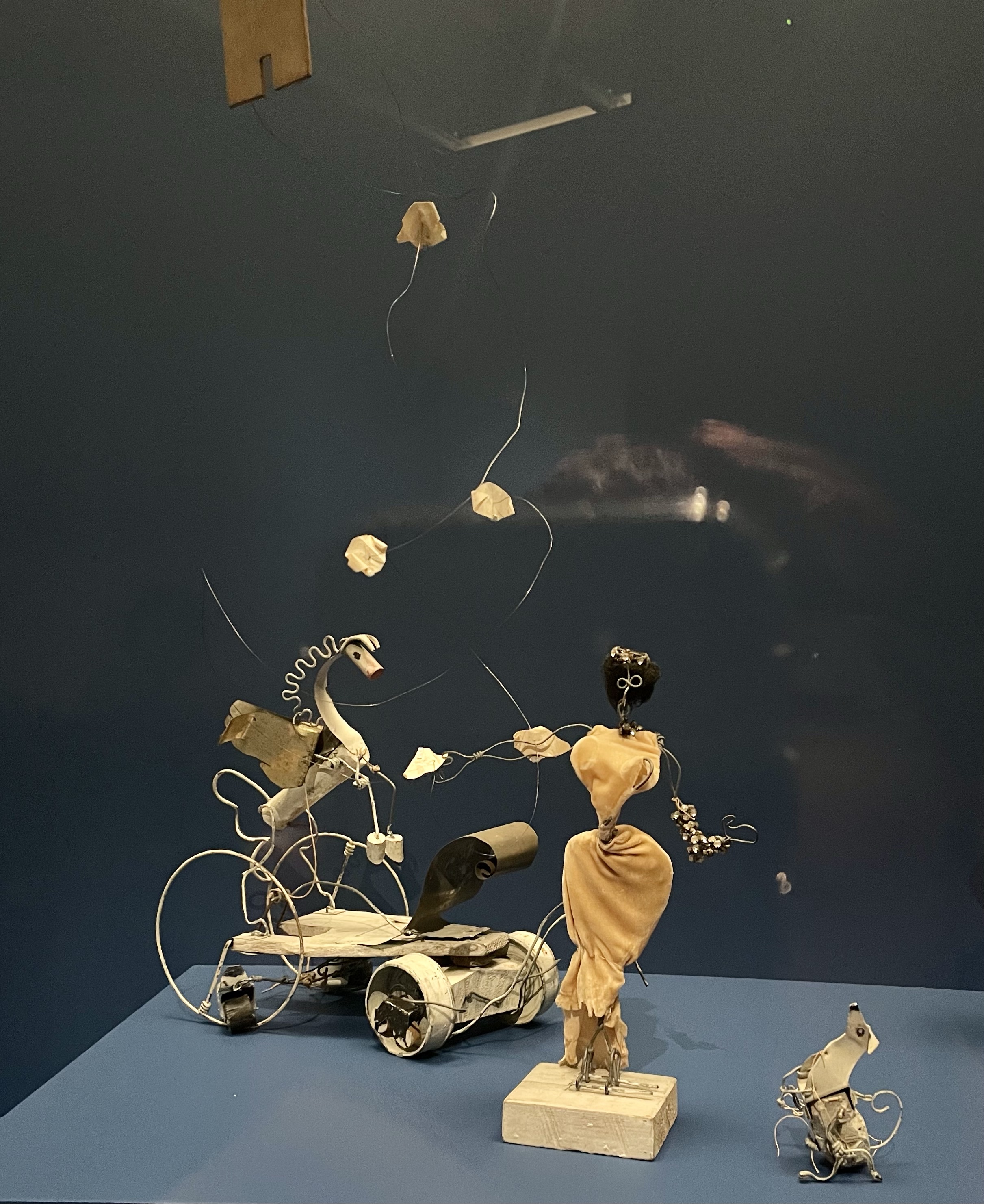Ok. Not my joke. I heard it from a guide at the Philadelphia Museum of Art years ago, but it does sum up the presence of the Calder family in Philadelphia.
The Father: Alexander Milne Calder is best known for the sculptures decorating City Hall. Born in Scotland to a tombstone-carver father, Calder emigrated to Philadelphia in 1868 and took classes at The Pennsylvania Academy of Fine Arts. In 1873, Calder was commissioned to create over 250 architectural sculptures for City Hall (which would take over 20 years), including the sculpture of William Penn that tops the building – over 100 years later it’s still the largest sculpture atop any building in the world. (A View of Philadelphia From the Biggest Municipal Building in the US, X-Rated William Penn???) Calder is buried in West Laurel Hill cemetery.


The Son: His son, Alexander Stirling Calder, was born in Philadelphia. Like his father, he studied at The Pennsylvania Academy of Fine Arts, and worked as an apprentice on his father’s City Hall commission. Calder went on to study in Paris. His most famous Philadelphia work is the Swann Memorial fountain, located in Logan Square, between the Academy of Sciences and the Free Library (a great place to cool off during the hot Philly summer!).



Calder also designed the Shakespeare Memorial located in front of the Free Library:

and also designed these sculptures of famous Presbyterians that formerly decorated the Witherspoon Building in Philadelphia and are now on view in the courtyard of the Presbyterian Historical Society on Lombard Street. They are his only known works in terra cotta. You can see them in place on this old photo of the Witherspoon building.





He is also buried in West Laurel Hill cemetery.

The Holy Ghost: Alexander “Sandy” Calder’s mobile, “Ghost,” hangs as the focal point of the Philadelphia Museum of Art’s Great Stair Hall.

Following in his father’s and grandfather’s footsteps, Calder #3 created his first sculpture (an elephant) when just 4 years old . Although he started his professional life as a mechanical engineer, he changed course to pursue an art career, moving to Paris where he became friends with members of the modernist avant-garde, including Marcel Duchamp (who coined the word “mobile” to describe Calder’s moveable, hanging sculptures). Calder began his art career making mechanical toys/sculptures and later developed the mobiles and larger stabiles that would make him famous. Calder’s largest mobile, “White Cascade,” can be seen hanging at the Federal Reserve (Who Exactly is “The Fed”? Exploring the Exhibits at the Federal Reserve Bank in Philadelphia), and the stabile “Three Discs, One Lacking” is part of the Association for Public Art’s outdoor sculpture collection at 17th/Benjamin Franklin Parkway (Free Art!).


The most recent works of Calder’s to go on display in Philadelphia are the 8 banners he created for the Centre Square development in 1975 as part of Philadelphia’s 1% to art requirement for new development (the only work of this type he created). As the building went through changes of ownership over the years, they were taken down and thought lost/damaged/destroyed. Luckily, they remained in good shape and were recently donated to the Free Library, where they have been conserved and are now on permanent display in the Central Parkway branch.

Funny story: Tobey and I once went to the Whitney Museum in New York for an exhibition of Calder mobiles. One of the daily events was an “activation” of several pieces. I’m not sure what we were expecting, but it wasn’t a formally dressed staff member and a wooden dowel covered on the end with a piece of cloth (looking like a giant Q-tip), that he used to poke several of the mobiles, thus “activating” them.
Standing at the window on the balcony of the Philadelphia Museum of Art, you can appreciate works by all three generations of Calder men. With Ghost at your back, you can look down the Benjamin Franklin Parkway to the Swann Memorial fountain, with the William Penn atop City Hall in the background.

Any Calder pilgrimage should include a visit to the Whitney in NY City, which has a small room dedicated to Calder’s Circus. Begun in Paris in the 1920’s, these mini-kinetic sculptures preceded the development of his mobiles, and were handmade with simple, everyday objects. Along with the circus itself, there is also a 1961 video of Calder performing the work.






Your description of the “activation” cracked me up. I probably would have died laughing if I’d experienced it in person!
LikeLiked by 1 person